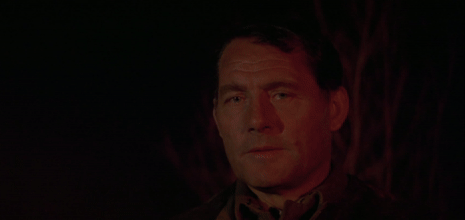
.com

Estd. 2020
Centenary
Project
2027

Approved by the Shaw Family
robert shaw

man of war

TAKING A MORE IN-DEPTH LOOK AT THE REAL AND FICTIONAL CHARACTERS ROBERT PLAYED IN THE THEATRE OF BATTLE.


John Pulford
RANK: Flight Engineer Sgt.
Royal Air Force
Campaign: World War 2
Lancaster serial number: ED932/G
Call sign: AJ-G
First wave: First aircraft to attack Möhne Dam. Mine exploded short of the dam.
Only one of Guy Gibson’s previous crew from 106 Squadron came with him when he set up the new 617 Squadron in March 1943. This was wireless operator Robert Hutchison. Mick Martin is thought to have recommended navigator Harlo Taerum, who in turn recommended bomb aimer Fred (Spam) Spafford. These three, along with rear gunner Richard Trevor Roper, were all in 50 Squadron when the call came.
John Pulford was born on 24 December 1919 in Sculcoates, a district of Hull, the second of the four children of George and Ada Pulford. He went to St Paul’s school, a local elementary school. He became a motor mechanic and joined the RAF a month before the outbreak of war as ground crew. Like many other ground crew, he volunteered for retraining as a flight engineer in 1942, when the senior authorities in Bomber Command decided to create this new category for heavy bomber aircrew, rather than use a qualified second pilot. His brother Thomas was also a flight engineer.
By December 1942, Pulford had joined 97 Squadron, based at Coningsby. He flew on 13 operations with Sqn Ldr E F Nind between December 1942 and March 1943. On 4 April, he was posted to Scampton, and assigned to Gibson’s crew. Gibson’s logbook actually records Pulford as flying with him on 1 April, but this must be bad record-keeping on the CO’s part.
Pulford’s father George died on 7 May 1943, and the funeral was fixed for Sunday 16 May. Pulford was given special permission to attend the funeral, but he was escorted throughout by two RAF policemen in order to ensure he didn’t let something slip about the planned operation. It is not clear whether he returned to Scampton in time for the all-crew briefing which took place at 1800 that day.
Despite the fact that they sat side by side throughout their Dams Raid training and on the operation itself, Gibson seems never to have noticed much about Pulford. In Enemy Coast Ahead he describes him as a Londoner, obviously unable to spot his Yorkshire accent. But he relied on the Hull man to operate the throttles as they hurtled towards the Möhne Dam at 240 mph, calling out the famous words ‘Stand by to pull me out of the seat if I get hit.’
All of Gibson’s crew were decorated for their collective actions on the Dams Raid, and John Pulford was awarded the DFM. However, he was sick at the time of the original investiture at Buckingham Palace on 22 June 1943, and collected his medal later in the year. Earlier, he had been home on leave and one night went out for a drink with his brother Thomas, also serving in the RAF. Both men were in civilian clothes and at some point in the evening someone put white feathers in their pockets.
In the run up to Gibson leaving 617 Squadron in the summer, five of his crew – including Pulford – were allocated to the new CO, George Holden. Pulford flew with Holden on his first operation with the squadron, a trip to bomb the Italian power station at Acqua Scrivia on 15 July.
The detachment flew on to RAF Blida in Algeria. On the return trip nine days later, where bombs were dropped on Livorno, he had swapped to the crew of Ken Brown. The reason why isn’t clear. Pulford didn’t fly with Holden again, and the CO then recruited the flight engineer from Bill Townsend’s crew, Dennis Powell. Holden, Powell and the remaining four members of the Gibson crew were all killed in the disastrous Dortmund Ems canal operation on 16 September 1943.
By December, Pulford was in another crew, piloted by Sqn Ldr Bill Suggitt, and completed several more operations. On 12 February 1944, Suggitt’s crew bombed the Antheor viaduct in southern France. They had used Ford airfield in Sussex as a staging post and successfully landed there in the early hours of the next day. Then in the short hop home from Ford to Woodhall Spa, they crashed into a hill on the Sussex Downs, near the village of Upwaltham. In 2009, a memorial to this crew and another who died in the area during the war was opened in the local church.
John Pulford is buried in Hull, in a plot next to his father.
Decoration awarded for Operation Chastise: DFM
KIA 13 February 1944
Rank and decorations as of 16 May 1943.

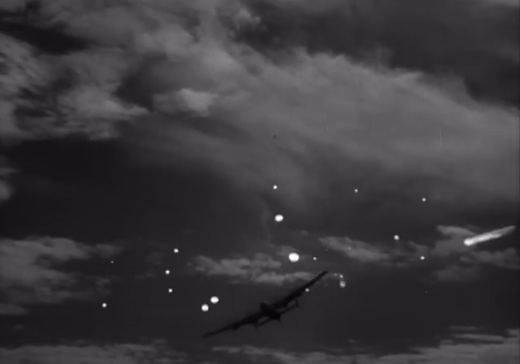

WILLIAM "BILLY" HODGE
RANK: LANCE CORPORAL
BRITISH ARMY NATIONAL SERVICE
CAMPAIGN: KOREAN WAR 1950-1953
REGIMENT: UNSPECIFIED
KIA by grenade, Korea 1951
During the retreat of 1951, a small force of British soldiers is in danger of being cut off by the advancing Chinese army. The plot emphasizes the plight of the National Service men who, as they say, were "old enough to fight, but too young to vote."
The film also depicts a "friendly-fire" incident, in which the British are bombed by the Americans.
The film opens in Korea with a British Army patrol, led by Lt. Butler. In the patrol is tough veteran Sergeant Payne, a slightly psychotic Corporal Ryker, and the cowardly signaller Wyatt. As they search a small village, one of the party falls victim to a bomb planted in a small shack.
With the death of one of his men, Butler moves the patrol out of the village. Out in the open plain, Butler and Payne discover a large force of Chinese soldiers heading directly for them. Sending Payne and the patrol back towards their own lines, Butler and three of his men stay behind to cover the withdrawal. After fending off two attacks, Butler discovers Lance Corporal Hodge is dead. Payne returns with the patrol, informing Butler that they were cut off by other enemy forces.
The patrol heads through the village and up a winding path towards an isolated temple located on a hill, with only a steep cliff to its rear. On the way, Wyatt throws away the only radio because he cannot be bothered to carry it up the hill. Then they run into an enemy patrol on the path. They ambush the Chinese, and continue up to the temple. With the Chinese knowing now exactly where they are, Butler must keep his troops together, and fend off the enemy attacks.



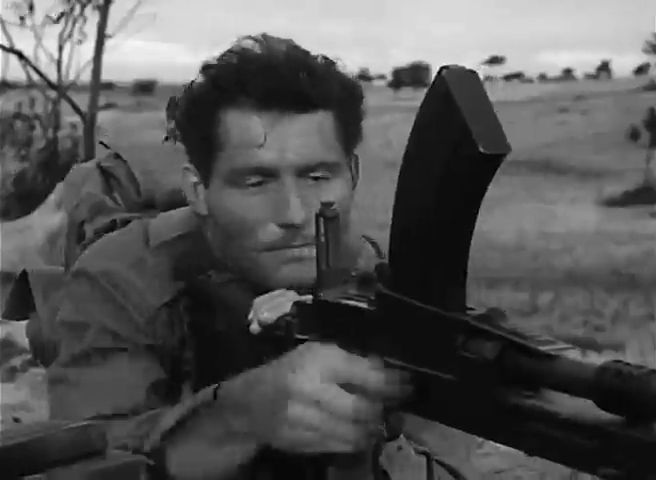
The Valiant


JOHN FIELD
RANK: LIEUTENANT
ROYAL NAVY
campaign: world war 2
SHIP: HMS VALIANT
Identification: Pennant number: 02
Motto: Valiant & Vigilant
Fate: Sold for scrap, 19 March 1948
THE FILM is based on the Italian manned torpedo attack
which seriously damaged the two British battleships Valiant and Queen Elizabeth and the oil tanker Sagona at the port of Alexandria in December 1941.
On 19 December 1941, Valiant was seriously damaged by limpet mines placed by Italian frogmen of Decima Flottiglia MAS, who entered Alexandria harbor riding two-man "human torpedoes" ("maiali"). Her sister ship Queen Elizabeth was also damaged.
Lieutenant Durand de la Penne placed the mines on Valiant. The other two teams attached their mines and escaped, but de la Penne's maiale broke down. De la Penne pushed the maiale under Valiant and left it on the bottom. Then he and his companion Corporal Emilio Bianchi emerged and were captured. They were interrogated by Captain Charles Morgan, but told him nothing.
A few minutes before the mines were scheduled to detonate, when it was too late to find and deactivate them, he informed Morgan of their existence (but not their location) to allow the crew onboard to evacuate. They were kept in the locked compartment, which was (unbeknownst to them or Morgan) just above where the mine would explode. Both were injured by the explosion, but survived.





MARTIN HESSLER
RANK: OBERST (COLONEL)
GERMAN ARMY
TANK COMMANDER WAFFEN PANZER DIVISION
BRANCH: HEER
CAMPAIGN: WORLD WAR 2
KIA BATTLE OF THE BULGE 1944
MILITARY COMMENDATIONS
-
Knight's Cross of the Iron Cross with Oak Leaves
-
Iron Cross 1st Class
-
Iron Cross 2nd Class
-
German Cross (Gold)
-
Heer Honor Roll Clasp
-
Panzer Assault Badge (75)
Oberst Martin Hessler was a Panzer division commander during World War II. He was chosen by Generaloberst Kohler to lead the armored spearhead that started the famous Battle of the Bulge using a group of newly built King Tigers.
Hessler was an extremely complicated man. He could be at once supremely ruthless but also very fair-minded, but in a cruel manner. When a French boy attempted to shoot him, he had the boy arrested. The boy's father begged for his son's life and so Hessler had him killed instead, letting the child go. At the same time, he also gave help to some local nuns.
Earlier, in Kohler's headquarters, he, politely but coldly, turned away a prostitute who'd been sent to his quarters, as he had no interest in sex, only in war. He also initially objected to Kohler giving him tank crews consisting of mostly teenagers because he considered them mere children, but became moved and accepted them as his men when they began proudly singing the Panzer anthem.
He later confided in his aide, Conrad, that he hoped the war would go on for years because he believed it was what he - and Germany as a whole - was best at.
When Conrad objected to what he saw as Hessler's warmongering, Hessler initially tried to instill a sense of national pride in him, but when Conrad refused to budge Hessler dismissed him as his aide and dismissed him to serve in the infantry supporting the spearhead.
Hessler could therefore be seen to be a man with extremely complicated and deep-rooted moral values that perhaps sense to no one but himself.
Towards the end of the battle, it became worryingly clear to Hessler that although the Germans possessed greater numbers and firepower than the Americans they were fighting, the fuel shortage plaguing them would spell their undoing. If the Tigers were to win the day, it was obvious they'd need fuel. As the crisis loomed, Hessler learned of an American fuel depot and took his personal Tiger tank to go and capture it.
In the meantime, however, the wounded American Army Intelligence officer Kiley had been taken to the depot after his plane crashed. Schumacher and some of his men, posing as American soldiers, arrived at the depot in advance of Hessler and killed all of the guards, but overlooked Kiley who was resting in a tent. American tank sergeant Guffy and his men arrived in their own damaged tank and, having encountered Schumacher previously, figured out he was an impostor and got the drop on him and his men, killing them.
Thus, the depot was still in American hands when Hessler arrived.
As the tank advanced up the dirt road, Kiley, recovering, directed Guffy and his men to puncture the fuel drums. The fuel flowed down the road, turning the dirt into slushy mud, which the King Tiger's treads became mired in. The fuel was then set alight.
Hessler was still determined to try and reach his goal, but his crew abandoned him in a panic. Climbing into the driver's seat he thundered towards his destination, but the Americans rolled a final, full fuel drum down the road. The drum lodged underneath the Tiger and blew it up, killing Hessler.
Hessler is an amalgamation of numerous Panzer officers who took part in the Germans' Ardennes Offensive, principally Joachim Peiper, even though Peiper was SS and Hessler in the film is Heer and objects to the infamous Malmedy Massacre when speaking with Kohler about the event.


"SKIPPER"
RANK: SQUADRON LEADER
ROYAL AIR FORCE
SQUADRON CALL SIGN: RABBIT LEADER
CAMPAIGN: WORLD WAR 2
BASE: RAF DUXFORD CAMBRIDGESHIRE
military commendations
-
General Service Medal
-
King George VI Coronation Medal
The film is generally faithful to events and, although merging some characters, it sticks to the orthodox view – that the Germans threw away strategic advantage by switching bombing from RAF airfields to London in revenge for RAF raids on Berlin.
Some later scholarship has cast doubt on one or another aspect of the orthodox view, arguing either: (a) that the switch to bombing London was made not for reasons of revenge but because the Germans thought they had already defeated RAF Fighter Command or (b) that accelerated British aircraft production meant that the prospect of a German victory was never likely (this view seems doubtful, in part because the issue was the number of pilots).
The film includes a sequence which relates the events of 15 August 1940, in which the Luftwaffe attempted to overwhelm fighter defences by simultaneous attacks on northern and southern England, the Luftwaffe reasoning that "even a Spitfire can't be in two places at once".
North East England was attacked by 65 Heinkel He 111s escorted by 34 Messerschmitt Bf 110s and RAF Driffield was attacked by 50 unescorted Junkers Ju. 88s. Out of 115 bombers and 35 fighters sent, 16 bombers and seven fighters were lost. As a result of these casualties, Luftflotte 5 did not appear in strength again in the campaign.
The Robert Shaw character "Skipper" is based loosely on Squadron Leader Sailor Malan, a South African fighter ace and No. 74 Squadron RAF commander during the Battle of Britain.
The scene in the operation room in which the British listen to their fighters' wireless transmissions relies on dramatic licence, as the operations room received information by telephone from the sector airfields.
The scenes at the end, where the RAF pilots are seen suddenly idle and left awaiting the return of the Luftwaffe raids, rely similarly on licence; the fighting fizzled out through late September, although daylight raids continued for some weeks after the 15 September engagement. 31 October 1940 is regarded as the official end on the British side.
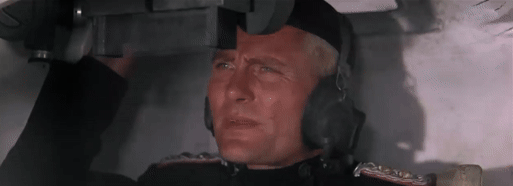

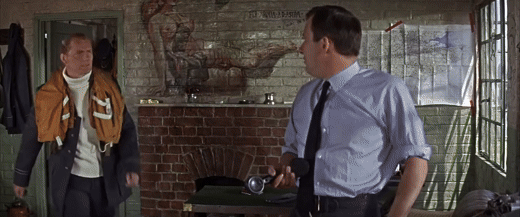


Keith Mallory
Rank: Major & Captain
British Army
BRANCH: LONG RANGE DESERT GROUP
FORCE 10
NO.9 COMMANDO UNIT
Campaign: World War 2
Force 10 from Navarone is a 1978 war film loosely based on Alistair MacLean's 1968 novel of the same name. It is a sequel to the 1961 film The Guns of Navarone. The parts of Mallory, Miller and Barnsby are played by Robert Shaw (who died before the film was released), Edward Fox and Harrison Ford, succeeding the roles originally portrayed by Gregory Peck, David Niven and Richard Harris.
It was directed by Guy Hamilton and also stars Carl Weathers, Barbara Bach, Franco Nero (in a "plastic surgery" role previously played by Tutte Lemkow), and Richard Kiel.
The film gets its title from the Alistair MacLean book of the same name, but bears little resemblance to the narrative of the novel. The differences are so apparent that MacLean would go on to loosely adapt part of the screenplay into his 1982 book Partisans.
IN THE NOVELS, Mallory was a New Zealand climbing expert. He was said to be capable of climbing almost anything, and his nickname was "The Human Fly." He served in the British military in the Long Range Desert Group during World War II. Because of mountaineering abilities, he was recruited by Captain James Jensen to accompany Lieutenant Andrew Stevens' team to Navarone to sabotage the great guns there.
Mallory's expertise was used to get the team up an unguarded cliff thought to be impossible to climb. When Stevens slipped and was badly wounded in the climb, Mallory became the de-facto leader of the team. He and Corporal Dusty Miller eventually succeeded in destroying the Navarone guns, despite being captured by Lieutenant Turzig briefly and being betrayed by their Greek ally Panayis. After successfully completing their mission, he and the survivors of his team, Miller, his friend Andrea Stavros, Casey Brown and Greek resistance member Louki, were rescued by the Royal Navy ship the Sirdar.
Mallory was thereafter flown to Italy along with Andrea and Miller to meet with Jensen, where he was assigned to go to Yugoslavia to rescue several British officers held prisoner by the Germans, and also to destroy an important bridge to prevent the forces of General Zimmerman from wiping out the Partisan troops led by General Vukolovic. To aid him, Mallory was given three Royal Marine commandos, Sergeant Reynolds, Sergeant Groves and Sergeant Saunders.
The six men flew into Yugoslavian airspace and feigned a crashlanding, where they surrendered themselves to the Cetnik troops led by Captain Droshny, pretending to be defectors. Droshny didn't believe they were defectors, and took them to his German superior, Captain Neufeld, who, after some convincing, believed they were.
Under the pretense of assisting the Cetniks defeat the Partisans and root out their secret leader, Mallory and his team went to the nearby Partisan camp along with blind musician Petar and his sister Maria. It turned out that Petar was the secret leader of the Partisans, although neither Neufeld nor Droshny knew it. While they were in the Partisan camp, Droshny, who still didn't trust Mallory, snuck in and murdered Saunders. Eventually, Maria and Petar were captured by Neufeld and the Cetniks, however Mallory and his team returned to the Cetnik camp and rescued them, and forced Neufeld and Droshny to take them to where the captured British officers were being held.
They freed the British prisoners, locking Neufeld and Droshny up in their place. The rescued British officers were flown out of the country on a plane, while Mallory and the others remained so they could destroy the bridge and prevent General Zimmerman from wiping out the Partisans. Despite interference from Neufeld and Droshny, who were freed, the team made it to a dam upriver from the bridge. They fought the German guards, whilst Miller planted his bombs and Andrea fought and killed Droshny.
During the battle, both Reynolds and Groves were killed, but the dam was successfully blown, sending a tidal wave which wiped out the bridge, and Zimmerman's armoUred column with it. Following the completion of their mission, Mallory, Andrea and Miller returned to Italy, where, to their annoyance, Jensen had another assignment for them!

